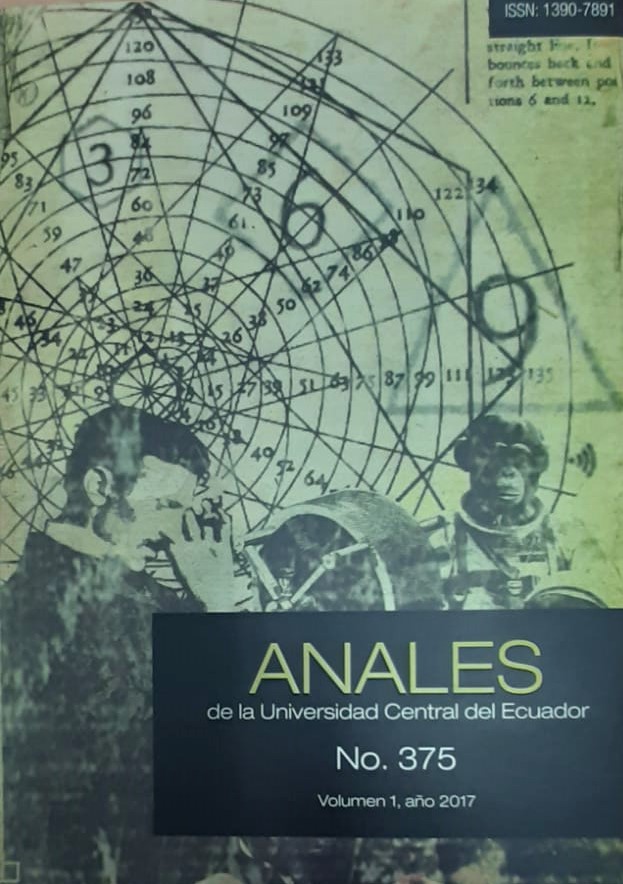El femtoscopio puede ser implementado utilizando dispersión de electrones y rayos X de bajas energías
DOI:
https://doi.org/10.29166/anales.v1i375.1585Keywords:
Femtoscope, Precision, Chromatography, Atom, RadioAbstract
Femtoscope involves the discernment and di erentiation of each element in atom and molecule, this logically implies measurement of the radius, never the exact position of protons, neutrons, nucleus and electrons. is work increases the level of precision in the atomic and nuclear measurements of the nanometers, characteristic of the atom to the order of femtometers, characteristic of nucleons.
Using the concepts of resonance and Schrödinger equation, the interaction of electrons and low energy photons with the matter is studied, and the atomic and nuclear radius are measured for elements of periodic table. We worked with the NIST public data and GC/MS chromatography information of the FIQ-UCE.
In synthesis, the resonance of x-rays at low energies (<70 keV) gives the atomic and nuclear geometry of the K-layer. Whereas, the resonance of electrons at low energies (<2 keV) gives the energies of outer layers of electron and the average radius of atom.
References
D. Human et al., Low energy electron diffraction using an electronic delay-line detector, Rev. Sci. Inst. 77 023302 (2006).
V. K. Lazarov, R. et al., Structure of the hydrogen-stabilized MgO (111)-(1x1) polar surface: Integrated experimental and theoretical studies, Phys. Rev. B 71, 115434. 2005.
B. L. Henke et al., X-Ray Interactions: Photoabsorption, Scattering, Transmission, and Reffection at E = 50-30,000 eV, Z = 1-92, Atomic Data and Nuclear Data Tables, Volume 54, Issue 2, July 1993.
Strauch Steffen, Fifth Workshop of the APS Topical Group on Hadronic Physics, April 2013, Denver, CO, USA.
Strauch Ste en, PANIC14, Hamburg, Germany, August 24 - 29, 2014 abstract.
Wong Samuel, Introductory Nuclear Physics, Second Edition, Wiley-VCH Verlag GmbH & C0. KGaA, Germany, 2004.
R. Pohl et al., e size of the proton, Nature 466, 213 (2010).
J. J. Hudson et al., Improved measurement of the shape of the electron, Nature Letters 473, 2011.
N. Lj. Duric, I. M. Cadez, and M. V. Kurepa, Int. J. Mass. Spectrom. Ion Processes 83, R7 (1988).
J. Schutten, F. J. de Heer, H. R. Moustafa, A. J. H. Boerboom and J. Kistenmaker, J. Chem. Phys. 44, 3924 (1966).
M. A. Bolorizadeh and M. E. Rudd, Phys. Rev. A 33, 882 (1985).
M. V. V. S. Rao, I. Iga and S. K. Srivastava, J. Geophys. Res. 100, 26421 (1995).
S. P. Khare and W. J. Meath, J. Phys. B 20, 2101 (1987), and references therein (theory).
H. C. Straub, B. G. Lindsay, K. A. Smith, and R. F. Stebbings, J. Chem. Phys. 108, 109 (1998).
Atkins P. and de Paula J., Physical Chemistry,W.H. Freeman and Company, New York, 2006, pp. 870-880.
Kolmogorov A, Petrovsky I and Piscounov N. Study of the diffusion equation with growth of the quantity of matter and its application to a biological problem, Bull. State Univ. Mos, (trans. by F. Oliveira- Pinto and B. W). Conolly, Applicable mathematics of non-physical phenomena, Ellis Horwood, 1937, 1982, pp.169 -184.
Goldstein H, Poole Ch and Safko J. Classical Mechanics, Addison Wesley, San Francisco, 2001, pp. 483-525.
Leslie Ballentine. Quantum Mechanics. A Modern Development. World Scientific, 1998.
Nakamura H, Mil’nikov G. Quantum Mechanical Tunneling in Chemical Physics. CRC Press Taylor & Francis Group, Boca Raton, Florida, 2013, pp. 17-19.
Bell R. P, The Tunnel Effect in Chemistry, Springer U.S, 2013, pp. 1-11; 32-62.
H. W. Kuhn and A. W. Tucker, Nonlinear programming, in (J. Neyman, ed.) Proceedings of the Second Berkeley Symposium on Mathematical Statistics and Probability, University of California Press, Berkeley, 1951, pp. 481-492.
L. A. Pars, An Introduction to the Calculus of Variations, John Wiley & Sons,New York, 1962.


